- Product
-
-
Product Features
-
Explore More
-
-
- Solutions
-
-
By Industry
By Department
-
By Business Need
-
-
- Learn & Support
-
-
Product Education
-
Product Support
-
-
- Resources
-
-
Insights
Events
-
-
- Partners
-
LONG BEACH, CALIFORNIA, August 13, 2025 — Laserfiche, the leading SaaS provider of intelligent content management and business process automation, today released new survey findings on AI adoption in the workplace, revealing that nearly half of Americans (49%) who use AI at work keep it to themselves, with 15% deliberately avoiding telling their manager.
As AI tools become more embedded in daily life, the survey reveals a workplace reality that is far less aligned. While many employees are eager to harness AI to boost productivity, inconsistent policies and cultural hesitation are fueling secrecy around AI adoption at work. Employees who are hiding their AI use worry it will be seen as lazy (16%), risky (15%), or out of step with company policy (16%).
Employee sentiment around AI remains divided. While 21% are optimistic, and 22% say AI already helps them work faster or more efficiently, others are more cautious. Nineteen percent are skeptical, citing concerns about accuracy or misuse, and 13% are anxious or resistant, uneasy about the risks and consequences of incorporating AI into their workflows.
Younger generations are more optimistic about AI at work: 24% of Gen Z and 20% of Millennials say they see its potential but are still learning how to use it, compared to just 10% of Baby Boomers.
Only one in three employees (36%) say their workplace has clear policies and approved AI tools in place. Meanwhile, 1 in 10 describe their organization’s AI environment as “the Wild West,” an unregulated space where people do what they want.
That lack of structure has consequences. Nearly half of employees (46%) admit to pasting company information into public AI tools, such as ChatGPT or Google Gemini, sometimes without knowing if the content is sensitive or confidential. Many turn to these tools in an attempt to gain a competitive edge (24%) or because their company’s own tools are too limited or hard to use (23%).
Older employees are significantly more cautious about using unofficial AI tools at work: 69% of Baby Boomers and the Silent Generation, and 35% of Gen X, avoid these tools, compared to just 21% of Millennials and 17% of Gen Z.
These findings highlight a growing AI governance gap. Usage is outpacing policy, and fear is replacing transparency. To solve this, organizations must do more than roll out AI tools. They need to foster a culture where employees feel informed, supported, and aligned on how and when to use them.
“When employees feel like AI is their ‘dirty little secret,’ that’s not a tech problem, it’s a leadership one,” said Karl Chan, CEO of Laserfiche. “Many employees are eager to embrace AI to work but often resort to unofficial tools when company-approved options are too limited or difficult to use. Innovative organizations can meet employee needs and unlock new potential by implementing guidelines, and adopting IT-vetted, intuitive AI tools that help employees reach productivity goals.”
The survey was conducted by Veridata Insights and commissioned by Laserfiche. It included 1,000 U.S.-based individuals aged 18 and over, census-balanced by age and gender.
About Laserfiche
Laserfiche is a leading enterprise platform that helps organizations digitally transform operations and manage their content with AI-powered solutions. Through scalable workflows, customizable forms, no-code templates and AI-enabled capabilities, the Laserfiche® document management platform accelerates how business gets done. Trusted by organizations of all sizes — from startups to Fortune 500 enterprises — Laserfiche empowers teams to boost productivity, foster collaboration, and deliver a superior customer experience at scale. Headquartered in Long Beach, California, Laserfiche operates globally, with offices across North America, Europe, and Asia.
Laserfiche is a Leader for the 10th consecutive year, ranks highest in usability.
LONG BEACH, CALIFORNIA, JULY 23, 2025 — Laserfiche — the leading SaaS provider of intelligent content management and business process automation — is a Leader in the Nucleus Research Technology Value Matrix for Content Services and Collaboration for the 10th year in a row. Among the vendors evaluated, Laserfiche ranks highest overall in usability. Download a copy of the report here.
“As a leader in this year’s Value Matrix, Laserfiche was rated highest in usability for its AI productivity tools, new administration hub, process automation and integration capabilities,” said Evelyn McMullen, research manager at Nucleus Research and author of the report.
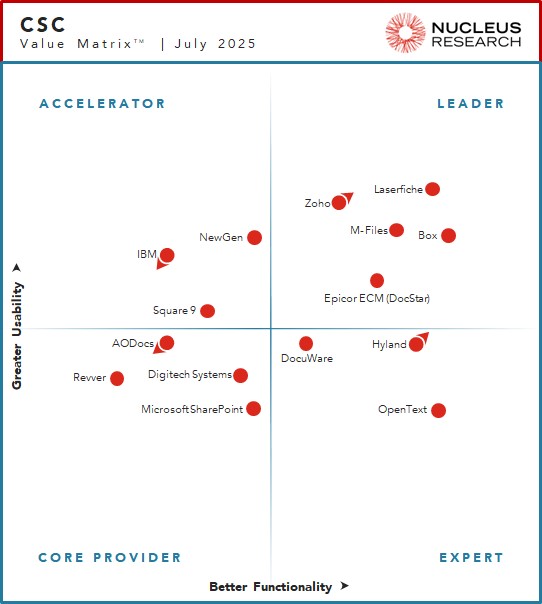
Recently released Laserfiche AI-powered features are aimed at boosting productivity even further and enabling automation at scale. Smart Fields, an out-of-the-box intelligent capture tool, allows customers to extract data automatically using natural language instructions, no matter the source or format. Smart Chat provides an intuitive chat interface that enables users to quickly gain insights from their repository content.
“As AI matures at an accelerated pace, vendors in the CSC market have the unique advantage of managing both structured and unstructured data from across the entirety of an organization,” the report’s Market Overview states.
Laserfiche AI features alongside powerful workflow automation, information governance and records management tools create new opportunities for organizational efficiency. Customers across industries use Laserfiche to increase productivity, create competitive advantage and drive growth.
“Laserfiche gives us the forms and workflow processes as well as data integration that enable efficiency at scale,” said Airline Hydraulics Chief Technology Officer Todd Schnirel. “Our Laserfiche-powered process improvements have supported us in achieving a significant increase in net revenue while adding very little operating expense.”
“Being ranked a leader for 10 consecutive years is a testament to our product innovation,” said Thomas Phelps, senior vice president of corporate strategy and CIO at Laserfiche. “Our top ranking in usability reflects our core value of putting people first and our commitment to delivering intuitive solutions that empower users.”
To learn more about Laserfiche’s position in the Content Services and Collaboration market, download the report here.
About Laserfiche
Laserfiche is a leading enterprise platform that helps organizations digitally transform operations and manage their content with AI-powered solutions. Through scalable workflows, customizable forms, no-code templates and AI-enabled capabilities, the Laserfiche® document management platform accelerates how business gets done. Trusted by organizations of all sizes — from startups to Fortune 500 enterprises — Laserfiche empowers teams to boost productivity, foster collaboration, and deliver a superior customer experience at scale. Headquartered in Long Beach, California, Laserfiche operates globally, with offices across North America, Europe, and Asia.
MPI was able to continue serving its members through one of the longest writers and actors strikes in entertainment industry history.
Laserfiche Transforms Digital Capabilities in Australia’s Archdiocese of Perth.
SITUATION
• Proactively responding to Royal Commission recommendations, the Archdiocese needed modern methods to enhance and streamline information management.
RESULTS
• Used Laserfiche technology to digitize and preserve historical documents
• Safeguarded the Archdiocese’s rich history while seamlessly integrating contemporary records for future efficiency
Located in Western Australia, the Catholic Archdiocese of Perth is a nearly 200-year-old religious organization with strong roots in the community. It consists of 110 parishes, 26 agencies and organizations, and about 70 schools. The Archdiocese is based in Perth, the capital city of the State of Western Australia.
As a large and historic religious community, the Archdiocese manages a vast flow of information across its many services. To improve its processes, proactively safeguard its community by following Royal Commission recommendations, and streamline operations, the Archdiocese partnered with Laserfiche to implement a secure and robust records management system.

Odhran O’Brien serves as the Director of the Archives and Information Governance Office, whose mission it is to oversee, preserve and make accessible the archives and digital information throughout the Archdiocese. When O’Brien was appointed in 2016, he and his team of seven individuals discovered the organization was managing information, particularly digital information, in inconsistent methods, that do not follow industry best practice. “Previously, information was siloed, and people could not access information from other departments. We felt we needed a high-level strategy to change that and bring the organization into the future,” said O’Brien. As a result, they created an Information Governance Strategy, focused on managing the Archdiocese’s digital information in a consistent manner across all its many agencies, parishes and organizations.
O’Brien and his team set to work right away finding the technology that could safely handle and store the information they planned to include within a records management system, some from nearly two centuries ago. Having worked with workplace technology provider Ricoh Australia for over a decade, the Archdiocese team partnered with the organization to find and implement the perfect solution. Laserfiche’s capabilities made it the obvious choice. “We’ve got records dating back to the 1840s. We’ve got sacramental information (information about people getting baptized and various sacraments within the church), but also all the business records of the organization, again, going back to the 1840s,” O’Brien shared.
The Archdiocese was able to easily and quickly use Laserfiche’s technology to digitize the abundant mix of historical documents and archive them within Laserfiche’s records management system. Additionally, they implemented a way for contemporary records to feed into the same system, enabling all documents to be organized and stored together in one, secure location.
Since turning to Laserfiche, the Archdiocese has experienced numerous benefits, especially when it comes to having one designated home for all information across the organization. “The primary benefit has been the fact that we now have a single source of truth for our 200 employees in our major administration center,” said O’Brien. “We’re also using automation throughout our 110 parishes. So, all the inquiries they receive for religious services, education and charitable requests are automated, allowing them to serve the community much more efficiently than they ever have in the past.”
O’Brien highlighted the significant benefits Laserfiche has brought to the Archdiocese and the community it serves: “Digitizing our information has not only enhanced our administrative creativity but also greatly increased our efficiency. What used to take weeks to find can now be accessed in real time.
“For example, by using Laserfiche, our Safeguarding Office has noticed that their small team of four people, serving tens of thousands in our community, can streamline workflows and improve accessibility to information. This efficiency not only allows the team to provide accurate, up-to-date information to stakeholders, clients, and the community but also frees up hundreds of hours per year for important safeguarding support with the Perth Church community.”
Laserfiche has also streamlined how the Archdiocese handles a wide range of inquiries, from religious sacraments to school enrollments and charitable support. O’Brien noted, “Laserfiche enables us to quickly and accurately direct individuals to the services they need, whether it’s for homelessness support or financial relief.”
Laserfiche provides nationwide accessibility, enabling historians, scholars and family members across Australia to easily request and access ancestral heritage and stories. This improved access accelerates research, supports publications, and enriches family trees. O’Brien added that since implementing Laserfiche’s search functionality, his office and small team have successfully fulfilled hundreds of requests each year.

Looking forward, the Archdiocese plans to expand its successful use of Laserfiche to other areas within the organization. One major aspect will include automation. “We’re hoping that a number of our large parishes and charities’ service and information requests will be completely automated through Laserfiche. So, they’ll be able to use all the services they provide, whether it be community services or simply religious services. People will log on to a website, access Laserfiche Forms, and those processes will go through automatically,” said O’Brien.
The Archdiocese also has plans of broadening Laserfiche’s reach in general and to include mobile options, such as an app, within the next two years. O’Brien shared, “We certainly hope we’ll move to a cloud-based solution so it can be implemented more widely. Currently, Laserfiche is implemented across both the Archdiocese of Perth and one of our neighboring archdioceses. So, that’s roughly an area the size of Spain or France. We’re hoping that we’ll continue to be able to expand that out further.
”The Archdiocese is committed to staying at the forefront of technology, with Laserfiche integral to its future plans. “What excites me most about our ongoing Laserfiche project is its potential for the future,” O’Brien said. “Embracing AI ethically and further automation in an easy UI and UX for staff, volunteers and stakeholders will enable us to enhance our services and more effectively support the community we are dedicated to serving.”
SITUATION
• Legacy processes included physical files that made collaboration for each event challenging to all involved
• With over 300 events and performances each year, the Maryland Theatre needed to streamline information and processes related to its packed calendar, nonprofit operations, sales initiatives and maintenance needs
RESULTS
• Improved quality of documentation, enabling faster, more informed decisions and delivery of an overall higher quality client and patron experience
• Hired an additional staff member to support the growing performance and events schedule
The Maryland Theatre first opened its doors in 1915, as a Vaudeville house. In 1927, it became a movie palace that offered audiences multiple movies daily for over 40 years. Even after being partially destroyed by a fire in 1974 and a consequent renovation, the theatre remains a significant part of the area’s history. The anchor of the area’s Arts and Entertainment District, the Maryland Theatre is also listed on the National Register of Historic Places.

While the staff of the century-old venue honors the past, they understand the importance of enabling audiences to enjoy the theatre for generations to come. That means ensuring the success of the business side of the theatre — digitizing and optimizing processes to improve efficiency, organization and collaboration across departments. The theatre now uses Laserfiche to support these efforts, collecting and managing information, and automating workflows so that staff can spend more time on creating a spectacular guest experience.
The theatre staff spent years looking for a solution that would help streamline day-to-day tasks and processes that are typically managed through a customer relationship management software (CRM). “Nothing ever seemed right,” said Audrey Vargason, operations manager at the Maryland Theatre. “Any system we looked at was either too costly, not customizable enough, not user friendly, or not cloud based.”
Laserfiche solution provider Doing Better Business introduced Laserfiche as a potential fit for the Maryland Theatre’s needs. “Ultimately, we chose Laserfiche over a big-box CRM for reasons such as security, customization, cloud-based accessibility, local customization support, and a user-friendly interface for a multi-generational workforce.”
Today, the theatre has implemented Laserfiche across multiple departments to:
“Laserfiche has had a positive impact on our time management, collaboration and accounts receivables, all things we believe are essential to providing quality entertainment,” Vargason said. “It also invokes our core value of collaboration.”
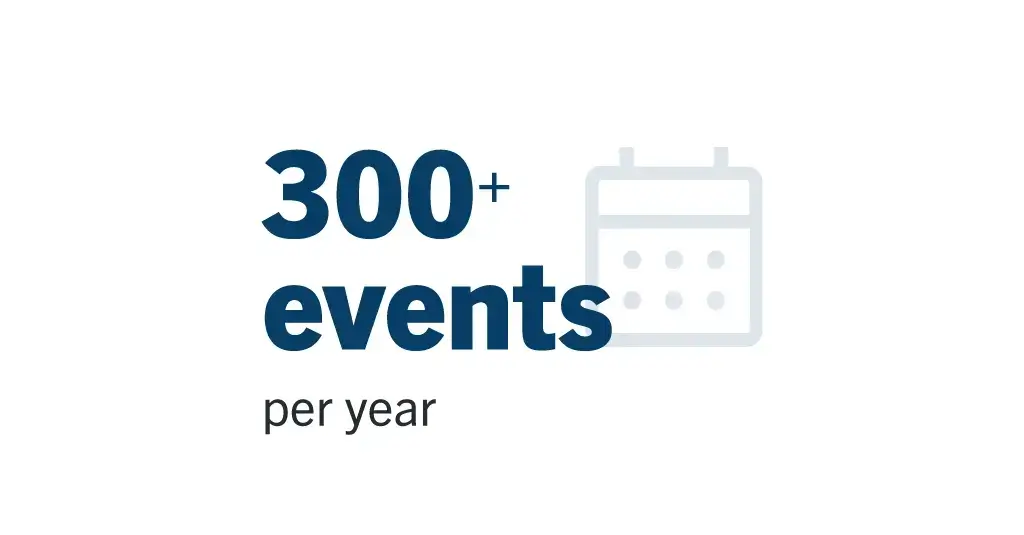
In addition to hosting 300-plus events and welcoming over 100,000 people annually, the theatre operates as a stand-alone nonprofit, adding complexity to documentation and process requirements. The staff has found, however, that Laserfiche adds an extra layer of quality assurance.
“Laserfiche has elevated the quality of our documentation,” Vargason said. “The organization and detailed documentation of our events is noticed by our clients, and it elevates the overall professionalism of our organization. It instills confidence in clients, knowing that we are focusing on the details, and we will deliver well-executed events.”
The theatre has seen benefits from using Laserfiche on a day-to-day basis for:
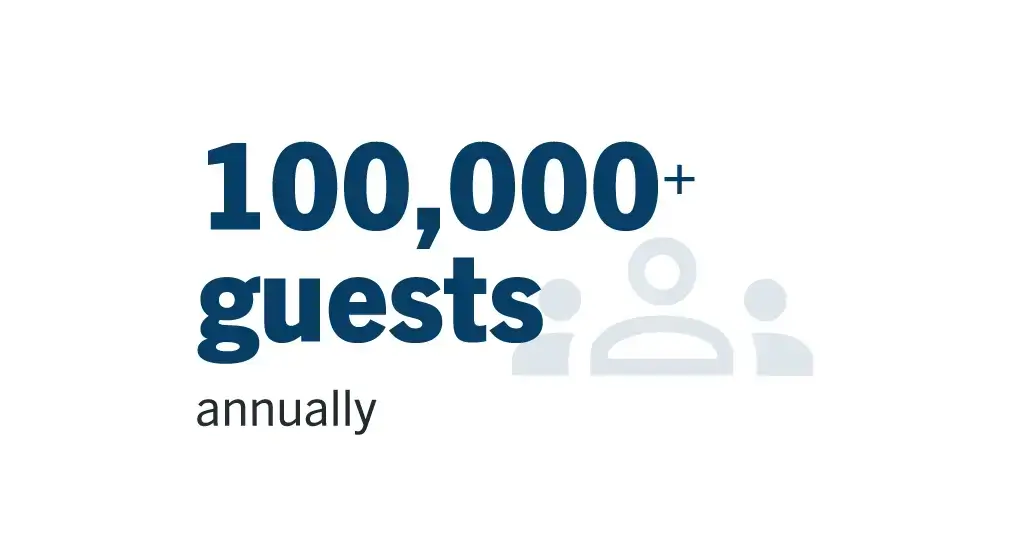
Laserfiche continues to grow with the organization. The theatre recently added a maintenance portal and hopes to introduce the board of directors to their own portal soon.
Additionally, integrations between Laserfiche, Microsoft 365 and Outlook streamline information flow even further, reclaiming time for staff members for value-added activities rather than making sure emails and other files are stored in the right places.
“Gone are the days of navigating paper files,” Vargason said. “We can quickly and efficiently view files, refer to contracts and past conversations, and make faster decisions when it comes to planning and executing our events.”
She added that the organization’s ROI extends beyond monetary metrics, with the theatre seeing improved productivity and reduction in errors — making the theater easier than ever to do business with. By digitally transforming the theatre’s paperwork, the team was even able to hire an additional staff member to support their growing performance and events schedule.
The theater continues to implement Laserfiche across more areas, with the board of directors, technical department and accounting department on the horizon. The ongoing digital transformation has increased efficiency, organization and collaboration at Maryland Theatre, so that staff can focus on the part of their work that can never be digitized: creating outstanding events and memories at a historic cultural venue.
“Laserfiche is better than a CRM; it’s a centralized hub where all staff can view, add and update information for our events and performances,” said Jessica Green, executive director at the theatre. “The program holds staff accountable and offers them a checklist at the same time — empowering them to complete the 200-plus tasks that are necessary for each event and performance.”
SITUATION
• Compliance with regulatory requirements was driven by manual tasks and loads of paper
• An increase in caseload uncovered a greater need for digital transformation of the customer onboarding process
RESULTS
• ETC managed a 100% increase in caseload without hiring additional staff
• Gained the ability to place job seekers 50% faster than competitors
When the Enterprise & Training Company (ETC) team began a digital transformation initiative in 2019, the goal was to improve compliance. In 2020, the COVID-19 pandemic upended the organization’s plans. As a not-for-profit specializing in employment and training services delivered on behalf of Australian and state governments, ETC found itself on the front lines of a global crisis. People were losing their jobs and ETC’s caseload doubled from 7,000 to 14,000 in a short period of time.
Over the past 30-plus years, ETC has helped over 95,000 people find jobs and trained over 46,000 people, but this was a completely novel challenge.
“We had to pivot to find a digital solution that would replace our face-to-face model and continue to provide a service for our current customers,” said Tim Welsh, manager of Innovation at ETC. “Our 18-month automation plan was brought forward, and we used Laserfiche to completely digitize 40 forms and associated workflows and release them into production within two months. This was a real game changer for our organization because it enabled us to get on the front foot and proactively service our customers.”
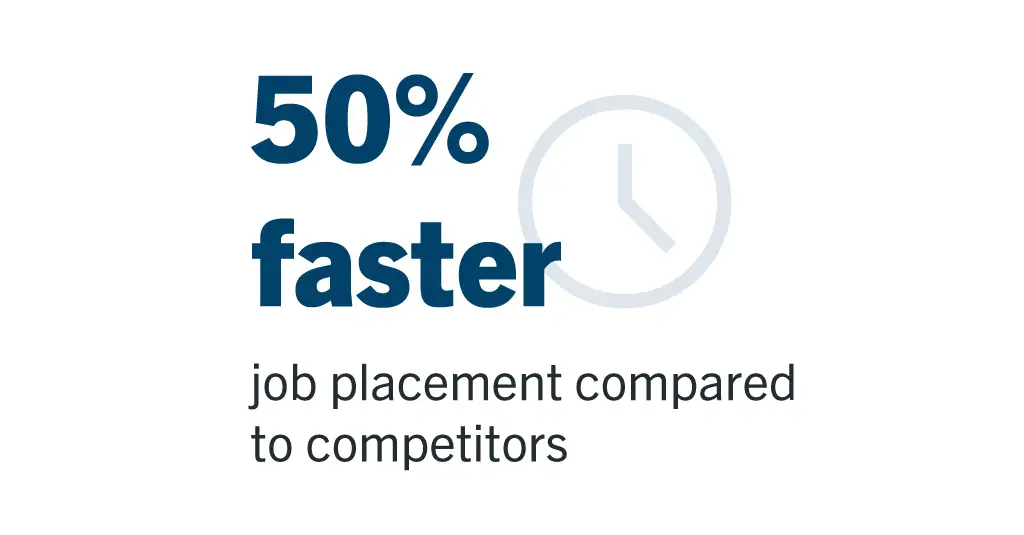
Ultimately, the team’s efforts allowed ETC to accelerate processes and place job seekers 50% quicker than ETC’s competitors — while still supporting compliance practices as originally intended.
“The impact of our Laserfiche initiatives meant we were able to support some of society’s most vulnerable people on their journey to finding work a lot quicker than what was occurring nationally, and what we would have normally been able to achieve,” Welsh added.
As stay-at-home mandates began to roll out across Australia, ETC braced for impact. Accustomed to supporting young people, people with disabilities, migrants and refugees, long-term unemployed, Aboriginal Australians and Torres Strait Islander people as well as the broader community, the ETC team knew that the pandemic would have widespread impact.
“Uncertainty around a worldwide pandemic was a stressful time for everyone, but even more so for many of our customers who had recently been made unemployed, some for the first time in their lives,” Welsh said.
The team accelerated its digital transformation plans, streamlining the customer onboarding process using Laserfiche Forms and workflow.
In the legacy customer onboarding process, customers complete documents required for compliance, including privacy consent and permission to contact their employer forms. Additionally, they complete a skill and ability to work assessment. Prior to the Laserfiche solution, ETC teams were required to:
All aspects of this process are now automated with Laserfiche, saving between 10-15 minutes per customer. Welsh added that it was a significant enhancement to the employee experience as well, as team members spend less time on manual tasks and more time helping customers get training and placed into jobs.
Streamlining the process further, ETC uses Laserfiche Connector and a custom API to query the organization’s CRM, which provides up-to-date customer information. “This ensures that the data we require, such as email addresses, are up to date when sending, receiving, and filing content and are not subject to user error,” Welsh said. “It also ensures that customer documents are saved in the correct location each time, which not only makes it easier for our staff in accessing information but is also essential during audits of our government contracts.”
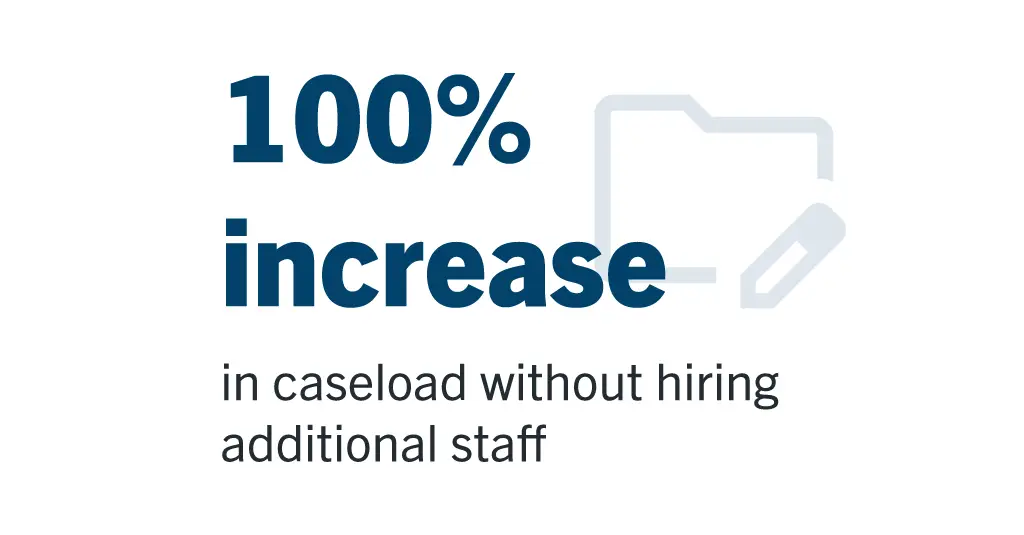
Before Laserfiche, if ETC saw a sudden spike in caseload, the organization would hire more staff to handle it. “In this case, we would have had to employ an additional 36 staff,” Welsh said. “Instead, thanks to Laserfiche, we brought forward our digitization and automation plans for onboarding customers. Rather than hire new staff, we created a centralized digital servicing team consisting of 13 people, saving us about $1.6 million in salary and on costs.”
This approach also saved ETC from having to source new premises to accommodate staff. Most importantly, however, the new digital servicing team enabled ETC to place people into jobs, on average, 50% quicker than competitors. At the same time, ETC is able to provide new opportunities for its staff to upskill and grow professionally.
“The low-code framework that Laserfiche provides means I can scale up people who actually understand the business,” Welsh explained. “Now we talk about them as citizen developers. … I can actually bring them in and teach them how to do more of that in-depth Laserfiche workflow.”
Compliance practices, too, have been simplified across the organization. “Employees love it,” Welsh said. “We’re a very, very heavy admin organization and there is a lot of compliance for our government contracts. And prior to Laserfiche, that was all done by hand.”
Today, ETC continues to grow and leverage digitization and automation to scale. In July of 2022, ETC was awarded government contracts that required an additional 258 staff to be trained to understand the delivery of service via Laserfiche for a customer base of over 10,000.
Future plans include more integrations that will help to create a holistic view of customer journeys and needs. The company is currently working to incorporate Laserfiche in an accounts payable solution that will integrate with ETC’s business intelligence and finance reporting systems.

“Laserfiche has revolutionized ETC’s ability to service the customer both internally and externally where and when they need it,” Welsh said. “Streamlining and digitizing our workflows has significantly reduced our administration overhead, allowing our teams to spend valuable time assisting their customers.”
New Beginning Children’s Homes Transforms Foster Care Placement and Services
New Beginning Children’s Homes—an Arkansas-based nonprofit dedicated to providing long-term, family-style living to children in the foster care system—began a digital transformation initiative to expedite and better personalize services. Using Laserfiche to digitize and automate many of the manual, everyday tasks required in caring for children in the foster care system, the nonprofit reduced inefficiencies and communication delays across a child’s entire support team.
Powering Faster Placement with Electronic Forms
New Beginning first implemented Laserfiche to streamline its referral program. By using Laserfiche Forms to digitize the paperwork required for placement inquiries, New Beginning now enables Department of Health Services (DHS) caseworkers to submit a complete profile of a child’s background to the organization.
Automated workflows assist staff in quickly evaluating and matching children with the right foster environment. Both caseworkers and foster parents of new placements are instantly notified via email.
“By knowing a child’s background in advance and being able to prepare for their arrival, we are in a better spot to serve them,” says Joseph Rocko, Director of Residential and Community Services at New Beginning.
New Beginning also used Laserfiche Forms to transform a 52-page intake packet that often used to arrive from DHS months after a child’s placement. Now, collecting the information electronically and automating the packet’s review process greatly reduces delays and manual data errors. These improvements enable New Beginning to facilitate rapid action, communication and service delivery among multiple agencies, caseworkers and foster families from the start.
“All of these things have helped to reduce the amount of time we’re spending emailing back and forth, making calls to and from the caseworkers, attempting to touch base with our foster homes to talk with them about the children we’re looking to place,” Rocko says. “Just about any process that took more than two phone calls to make, we made that into an automated process in Laserfiche in one click—simple edit, done.”
Powerful Service with Server-Less Cloud Systems
By implementing a Laserfiche cloud solution, New Beginning benefited from scalability. The organization also automated other critical forms-based processes, like employment applications and monthly summaries, to ensure quality care is provided throughout a child’s stay.
Previously, New Beginning’s staff and foster parents spent hours processing over 60 handwritten pages of weekly case notes. With digital forms, parents can now complete case notes in a matter of minutes, and administrators spend just 40 minutes each week filing case documentation. Laserfiche instantly sends new documentation to a child’s therapists, DHS works and attorneys, forming a complete, accessible and accurate snapshot of a child’s experience in foster care and insight into areas for immediate follow-up.
“By having Laserfiche implemented and having these pre-fillable forms for these families, we have found that 100 percent of the efforts that go into documentation have been reduced,” says Rocko. “Our families are able to turn that time and focus more on the family unit.”
Benefits
“The crazy thing about implementing Laserfiche was that we knew we could save time and be more efficient; however, we never realized the other cost savings that would come with it,” says Rocko. “Best of all though, our parents can now spend more time being a supportive family for the children that come into our care. Instead of hours pushing paperwork, they spend a fraction of the time with the electronic forms.”
Want to learn more about transforming case management with Laserfiche? Click here to get a personalized demo.